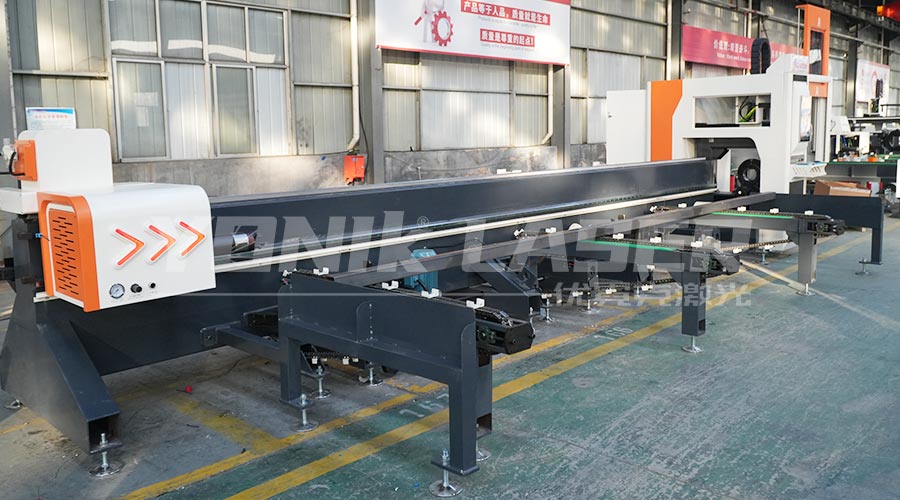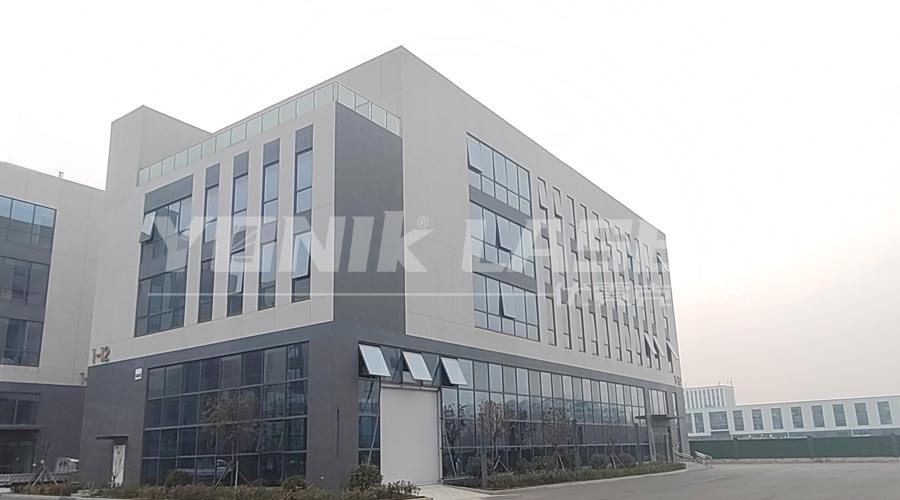In the context of manufacturing’s pursuit of efficient and precise processing, laser cutting technology has become a core process in sheet metal fabrication, aerospace, automotive manufacturing, and other fields due to its non-contact cutting, small heat-affected zone, and wide material adaptability. However, many enterprises find that even with the same equipment, cutting quality remains inconsistent—issues like rough cuts, slag adhesion, and deformation frequently occur. The root cause often lies in unreasonable cutting parameter settings. This article systematically analyzes how to optimize cutting quality by adjusting four core parameters—laser power, cutting speed, assist gas pressure, and focal position—combined with material characteristics and practical cases, providing guidance for enterprises to achieve high-quality, low-cost production.

1. Laser Power: The "Energy Foundation" of Cutting Capacity
Laser power is the key parameter determining whether a material can be fully cut, and its optimization requires dynamic adjustment based on material thickness and type.
1.1 Power-Material Thickness Matching Principle
Thin Plate Cutting (<3mm): Excessive power causes material overheating and deformation, while insufficient power may fail to penetrate. For example, cutting 1mm stainless steel with 1500W power and high-speed cutting (20m/min) achieves smooth cuts.
Medium-Thickness Plate Cutting (3-12mm): Power must be increased to ensure energy density. Cutting 6mm carbon steel with 3000W power and medium-speed cutting (12m/min) balances efficiency and quality.
Thick Plate Cutting (>12mm): High power (>4000W) is essential but requires slow cutting (8m/min) to avoid slag residue.
1.2 Risks of Power Overstatement and Verification Methods
Some manufacturers may overstate power through "peak power" claims. Verification method: Cut thick plate samples (e.g., 20mm carbon steel) and observe whether the cut is vertical and free of slag. If a machine labeled as 6000W fails to cut thick plates, performance may be compromised.
2. Cutting Speed: The "Balance Lever" of Efficiency and Quality
Cutting speed directly impacts production efficiency and cut quality, and its optimization must follow the "energy density conservation" principle.
2.1 Dynamic Matching of Speed and Power
Thin Plate Scenarios: High-speed cutting (>18m/min) reduces heat input and lowers deformation risk. For example, cutting 1mm aluminum at 25m/min controls surface roughness (Ra) within 2μm.
Thick Plate Scenarios: Low-speed cutting (<6m/min) ensures slag is fully blown away. Cutting 15mm stainless steel at 5m/min with high-pressure nitrogen achieves slag-free cuts.
2.2 Negative Impacts of Speed Fluctuations
Uneven speed causes "wave patterns" on cuts. Solution: Use servo motor control for cutting head movement to ensure speed fluctuations <±2%; regularly calibrate the transmission system to reduce mechanical vibration.
3. Assist Gas Pressure: The "Invisible Hand" of Slag Control
Assist gases (oxygen, nitrogen, air) directly impact cutting quality by blowing away slag, cooling materials, and preventing oxidation. Pressure settings must follow the "material-gas-pressure" matching principle.
3.1 Pressure Ranges for Different Gases
Oxygen: Used for carbon steel cutting, pressure adjusts with thickness (3mm carbon steel: 15bar; 8mm carbon steel: 25bar). Insufficient pressure leads to incomplete oxidation and dark cuts.
Nitrogen: Used for stainless steel and aluminum cutting, pressure stabilizes at 18-22bar. Excessive pressure wastes gas, while low pressure fails to suppress slag splashes.
Air: Low cost but contains impurities, suitable only for low-precision scenarios (e.g., <3mm carbon steel), with pressure recommended at 10-12bar.
3.2 Dynamic Adjustment Techniques for Gas Pressure
For thick plate cutting, adopt a "segmented pressure adjustment" strategy: increase pressure to 25bar during initial penetration to rapidly blow away slag, then reduce to 20bar during stable cutting to minimize gas consumption.
4. Focal Position: The "Precise Delivery" of Beam Energy
Focal position determines the distribution of laser energy on the material surface, and its optimization must combine material thickness and cutting mode.
4.1 Relationship Between Focal Position and Material Thickness
Thin Plate Cutting: Focus 0-1mm above the material surface to expand the beam diameter, reduce heat input, and avoid burn-through.
Medium-Thickness Plate Cutting: Focus 1-2mm below the material surface to concentrate energy and improve cutting speed.
Thick Plate Cutting: Focus 2-3mm below the material surface, combined with slow cutting, to ensure slag is fully blown away.
4.2 Calibration Method for Focal Position
Use the "bevel calibration method": Cut a 10° inclined carbon steel plate and observe the cut width difference. If the top is wider than the bottom, the focus is too low; if the top is narrower, the focus is too high. Adjust the laser head height to achieve uniform cut width.
5. Material Adaptability Optimization: Parameter Differences from Carbon Steel to Aluminum
Different materials have significant differences in physical properties (thermal conductivity, reflectivity, melting point), requiring targeted parameter adjustments.
5.1 Carbon Steel Cutting: Utilizing Oxidation Reactions
Carbon steel cutting relies on oxygen-assisted combustion, requiring sufficient and controllable oxidation:
Parameter Settings: Power 2000W, speed 12m/min, oxygen pressure 20bar.
Quality Control: Oxide layer thickness must be <0.1mm, achievable by reducing speed or increasing pressure.
5.2 Stainless Steel Cutting: Precise Cutting with Nitrogen Protection
Stainless steel’s low thermal conductivity leads to viscous slag, requiring nitrogen to suppress oxidation:
Parameter Settings: Power 2500W, speed 15m/min, nitrogen pressure 22bar.
Quality Control: Surface roughness (Ra) must be <3μm, achievable by increasing nitrogen pressure or reducing speed.
5.3 Aluminum Cutting: Overcoming Reflectivity
Aluminum’s high reflectivity causes laser energy loss, requiring parameter optimization to improve utilization:
Parameter Settings: Power 3000W, speed 18m/min, nitrogen pressure 25bar.
Quality Control: Cuts must be free of wave patterns, achievable by adjusting the focal position (1.5mm below material surface) or using a "pulsed cutting" mode to reduce reflection.
6. Practical Cases: Quality Improvement Through Parameter Optimization
Case 1: Slag Adhesion in 5mm Stainless Steel Cutting at an Automotive Parts Enterprise
Issue: Slag adhesion rate on one side of the cut exceeded 10%, requiring manual grinding.
Optimization: Increased nitrogen pressure to 22bar and reduced cutting speed to 14m/min.
Result: Slag adhesion rate dropped to 2%, single-piece processing time reduced by 30%, saving $22,500 in annual labor costs.
Case 2: Deformation in 20mm Carbon Steel Cutting at a Shipbuilding Enterprise
Issue: Heat-affected zone (HAZ) width exceeded 2mm, causing material deformation.
Optimization: Adopted a "segmented cutting" strategy (cut outer contours first, then inner contours) with slow speed (5m/min) and high oxygen pressure (25bar).
Result: HAZ width reduced to 0.8mm, deformation decreased by 80%, and material utilization increased by 12%.

7. Advanced Techniques for Parameter Optimization: From Experience to Data-Driven
7.1 Establish a Material Parameter Library
Record optimal parameter combinations for different materials and thicknesses (e.g., 3mm stainless steel: power 1800W, speed 20m/min, nitrogen pressure 20bar) to form an internal "cutting process database."
7.2 Introduce Smart Sensors
Install temperature and gas pressure sensors on the cutting head to monitor parameter deviations in real time and automatically adjust power, speed, and other parameters to ensure stable cutting quality.
7.3 Regular Maintenance and Calibration
Check laser output power stability weekly (fluctuation <±3%), calibrate focal position and gas pressure monthly, and replace consumables (e.g., nozzles, lenses) quarterly to avoid parameter drift accumulation.
Conclusion
Enhancing cutting quality in laser cutting technology essentially integrates "parameter science" with "process experience." Enterprises must establish a systematic parameter optimization system based on their material types, thickness ranges, and production rhythms, and ensure parameters remain optimal through data recording, smart monitoring, and regular maintenance. By optimizing parameters, enterprises can not only significantly improve cut precision and reduce secondary processing but also extend equipment lifespan and lower comprehensive costs, providing core technical support for manufacturing transformation and upgrading.
2025-07-22
2025-07-21
2025-07-19